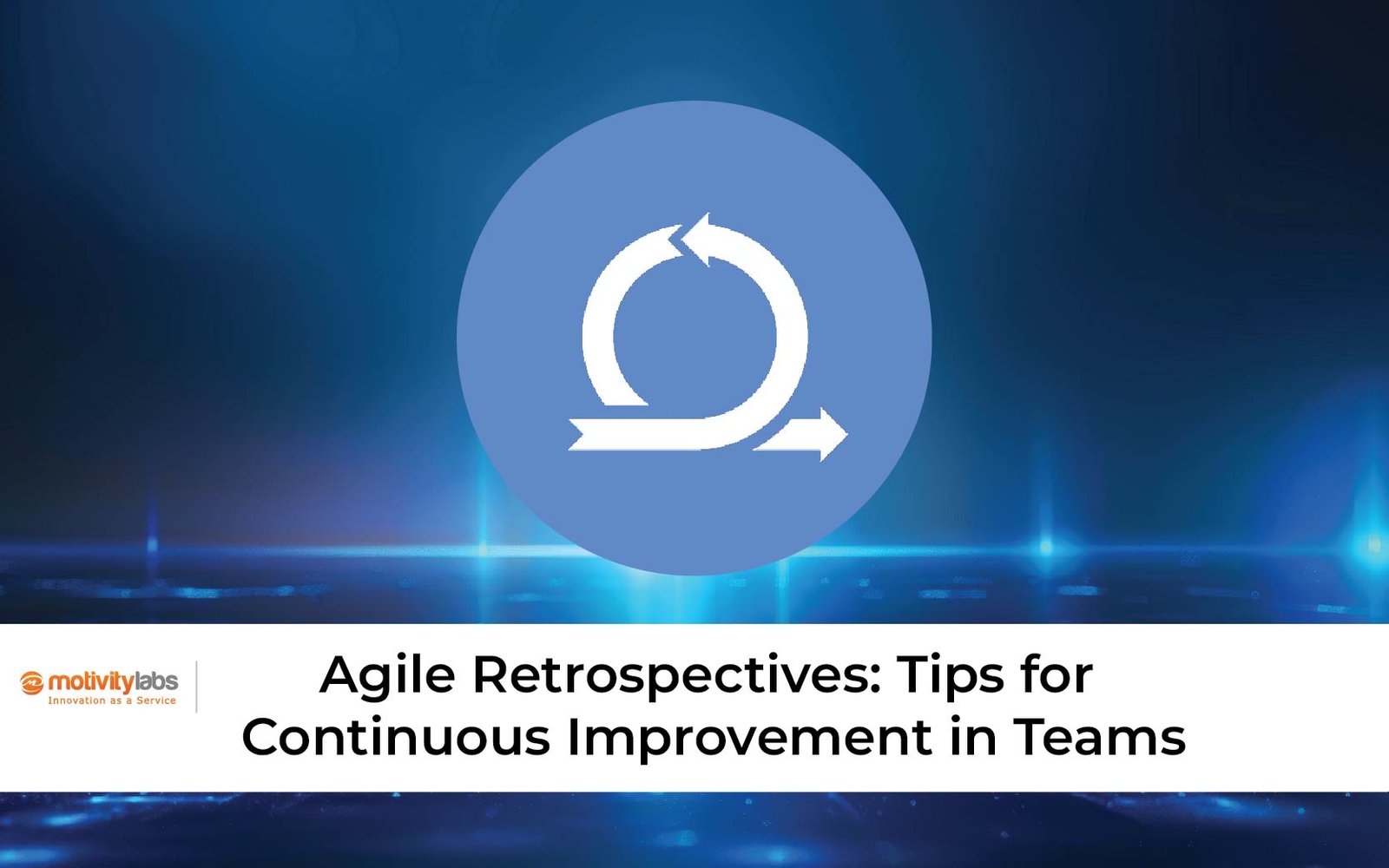In Agile, the end of a sprint does not signal a finish line. It marks a checkpoint. It is a moment to reflect and an opportunity to improve. That is where retrospectives come in. Agile retrospectives are more than just routine meetings. They are powerful tools for driving consistent team growth.
When done right, retrospectives help teams uncover what is working, what is not, and how to adapt. It is the heartbeat of continuous improvement, the rhythm that keeps Agile teams aligned and evolving.
Let us explore what makes retrospectives effective, share practical tips to improve them, and understand how teams can get the most out of these sessions.
What Is an Agile Retrospective?
An Agile retrospective is a structured meeting held at the end of each sprint. The goal is simple but impactful: to discuss what went well, what did not, and how the team can improve moving forward.
The format can vary, but the spirit remains the same: transparency, collaboration, and actionable feedback. It is not about blame. It is about building better habits, stronger teams, and advanced workflows.
Why Retrospectives Matter
Agile is built on adaptability. Without consistent reflection, teams risk falling into patterns that slow progress. Retrospectives give teams a dedicated space to assess and adjust. According to the Notta report on Agile statistics in 2025, an overwhelming 93% of Agile organizations report better customer satisfaction and stronger operational performance. Additionally, 73% cite higher employee engagement compared to non-Agile teams.
Here is why they matter:
- They build trust. When team members share openly, psychological safety improves. Trust is the fuel behind high-performance teams.
- They surface inefficiencies. Bottlenecks, blockers, and miscommunications can be addressed early before they become major obstacles.
- They promote accountability. Every team member plays a role in improvement. Retrospectives reinforce shared ownership.
- They celebrate wins. Recognizing what went well boosts morale and helps teams repeat success.
A good retrospective is not about perfection. It is about progress.
Tip 1: Set the Tone Right
Start your retrospectives with the right mindset. This is not a fault-finding mission. It is a learning session. Foster a safe environment by emphasizing that the discussion is free of blame. Everyone should feel encouraged to share openly. When people hold back, valuable insights get lost.
One great way to set the tone is to begin with a check-in round. Ask a simple question like, “How are you feeling about this sprint?” It breaks the ice and helps humanize the conversation.
Tip 2: Vary the Format
Routine kills engagement. Participation and enthusiasm tend to decline when every retrospective follows the same format. Shake things up.
Try different formats like:
- Start-Stop-Continue: Identify what the team should start doing, stop doing, and continue doing.
- Mad-Sad-Glad: Encourage emotional feedback. It reveals more than process-focused formats.
- Sailboat: Imagine your project as a boat. Wind pushes you forward, anchors hold you back, and rocks are hidden risks.
Variety keeps things fresh. It encourages deeper thinking. It helps you uncover insights that rigid formats miss.
Tip 3: Keep It Focused
A common mistake in retrospectives is trying to solve everything at once. You do not need to fix every issue. You need to make meaningful progress. Keep the conversation focused. If multiple issues arise, prioritize. Use dot-voting or a simple consensus to identify the most pressing topics.
Focus on a few key action items. Document them, assign responsible team members, and track progress in the following sprint. Continuous improvement is a journey that progresses one step at a time.
Tip 4: Make It Visual
Visual tools can turn a dull meeting into an engaging one. Whether you are working in person or remotely, visuals help organize thoughts and keep people invested. Use digital whiteboards like Miro, Mural, or FigJam. Create columns for different sections. Drop in sticky notes, group ideas, and draw connections.
People process visuals faster than text. Additionally, it injects energy into the session, and energy fosters more productive conversations.
Tip 5: Include Everyone’s Voice
Retrospectives should be inclusive. That means every team member, no matter their role or experience, should have a voice.
Often, the quietest voices offer the most valuable insights. Implement round-robin techniques to ensure that everyone has an opportunity to speak. You can also use anonymous input tools for individuals who may be hesitant to share openly. Make it a rule that everyone participates, not just the loudest in the room. Diversity of thought is where real improvement begins.
Tip 6: Revisit Past Actions
A retrospective without follow-through is merely a discussion without action. At the beginning of each retrospective, revisit action items from the last one. Did the team implement the changes? Were they effective? What lessons were learned?
This creates a feedback loop, demonstrating the team’s commitment to growth. It generates momentum and sends a clear message: every voice contributes to actionable outcomes.
Tip 7: Address the “Why”
Teams often jump straight into what happened during a sprint. But without asking why, the insights stay shallow. For example, if a story was not completed, do not just note it. Ask why. Was the task underestimated? Were there any dependencies? Was the requirement unclear?
Dig deeper. Look for root causes. That’s how you solve problems—not just symptoms.
Tip 8: Time It Right
A rushed retrospective leads to rushed insights. A bloated one leads to disengagement. Schedule the retrospective at an appropriate time. A session lasting 60 to 90 minutes is usually adequate for a two-week sprint. Avoid compressing it into a lunch break and ensure it receives the dedicated time it deserves.
Avoid scheduling it at the end of a long day when energy and focus are low. Schedule it when the team has energy and focus. How you time your retrospective says how much you value it.
Tip 9: Make It a Team Habit
The best Agile teams do not treat retrospectives as optional. They establish it as a routine, a shared practice that promotes growth. Even during chaotic sprints, do not skip the retrospective. That is when it is most needed.
The more consistently you hold retrospectives, the stronger the team becomes. Reflection becomes second nature. And improvement becomes a lifestyle.
Tip 10: Use Data Wisely
Data gives retrospectives depth. Use sprint metrics to spark discussion. Velocity, cycle time, and burndown charts tell a story. Pair those numbers with team sentiment, and you get the full picture.
Be careful not to let data dominate the conversation. It is a guide, not a verdict. Let the team interpret it together. Use it as a mirror, not a microscope.
Agile Retrospectives and Company Culture
Retrospectives reflect the culture of an organization. A team that engages in regular reflection experiences consistent growth. Over time, these conversations shape how people think, collaborate, and innovate.
In high-performing teams, continuous improvement is not a task. It is a mindset. Retrospectives create the space to nurture that mindset.
Reflect, Improve, Repeat with Motivity Labs
Agile retrospectives are the pulse of great teams. They offer space to learn, adapt, and improve together. But they are only as effective as the effort behind them.
Motivity Labs believes that continuous improvement drives competitive advantage. Work with organizations to embed Agile values into their development DNA. From customized coaching to hands-on Agile transformation, Motivity Labs empowers teams to turn retrospectives into tangible results. Whether a team is beginning its Agile journey or aiming to elevate performance, Motivity Labs serves as a trusted partner in progress.
Reflect. Improve. Repeat.
Grow with every sprint!



